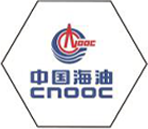
Nov . 01, 2024 20:51
Back to list
high pressure regulators
Understanding High Pressure Regulators
High pressure regulators are crucial components in various industries, ensuring the safe and efficient management of gas and fluid systems. These devices function by controlling the pressure of gases or liquids delivered from a high-pressure source, allowing for stable operation of equipment, safety for operators, and longevity of the entire system.
The Function of High Pressure Regulators
The primary role of high pressure regulators is to reduce and maintain the output pressure of a gas or fluid. When a gas is stored in a high-pressure tank, it exists at a pressure that is significantly above what most applications or tools can safely handle. A regulator steps down this pressure to a level that is suitable for use, typically in the range of 0 to 50 psi, although some applications may require even lower pressures.
The operation relies on a diaphragm mechanism within the regulator. When gas enters the regulator, it pushes against the diaphragm, which in turn moves a valve that controls the flow. As the output pressure approaches the desired level, the diaphragm's movement adjusts the valve position to maintain a consistent output pressure despite fluctuations in input pressure or demand.
Applications of High Pressure Regulators
High pressure regulators are employed in various sectors, including industrial manufacturing, medical applications, and oil and gas industries. In industrial settings, they are essential for processes that involve welding, cutting, and other tasks where precise gas flows are critical. For instance, oxygen and acetylene regulators are vital for welding operations, ensuring that the gases are delivered at the correct pressures for combustion.
high pressure regulators

In the medical field, high pressure regulators are used with gas delivery systems for anesthesiology and respiratory therapy. Here, it is vital to deliver gases like oxygen at safe pressures to ensure patient safety. Precision is paramount, as incorrect pressures can lead to severe medical consequences.
Safety Importance
The importance of safety in the use of high pressure regulators cannot be overstated. These devices typically feature pressure relief mechanisms and fail-safe designs to prevent potential hazards, such as explosions or leaks. Regular maintenance and testing are crucial to ensure that regulators operate correctly and safely.
Additionally, operators must be trained to handle these devices properly, understanding both the operational parameters and the inherent risks involved with high-pressure systems. Implementing stringent safety protocols, including thorough inspections and adherence to guidelines, is vital in all applications using high pressure regulators.
Conclusion
High pressure regulators play a vital role in modern industry and medicine, ensuring safe and efficient operation across a wide range of applications. Understanding their function, application, and importance in safety can help users maximize the utility of these essential devices. As technology continues to evolve, the design and capabilities of high pressure regulators are expected to improve, leading to even greater safety and efficiency in future applications. With ongoing advancements, these regulators will remain indispensable tools across various fields, contributing to the safety and functionality of high-pressure systems.
Next:
Latest news
-
Safety Valve Spring-Loaded Design Overpressure ProtectionNewsJul.25,2025
-
Precision Voltage Regulator AC5 Accuracy Grade PerformanceNewsJul.25,2025
-
Natural Gas Pressure Regulating Skid Industrial Pipeline ApplicationsNewsJul.25,2025
-
Natural Gas Filter Stainless Steel Mesh Element DesignNewsJul.25,2025
-
Gas Pressure Regulator Valve Direct-Acting Spring-Loaded DesignNewsJul.25,2025
-
Decompression Equipment Multi-Stage Heat Exchange System DesignNewsJul.25,2025

